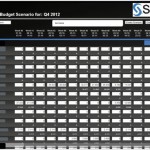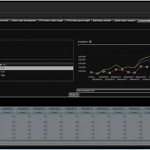Recently I held a webinar for a Nordic audience of people responsible for marketing, discussing the subject of marketing mix optimization, which I believe to be a game changer for companies in the years to come. The reason: A continuous proliferation of touch points is putting pressure on our organization and underlying processes to deliver relevant, consistent, and profitable customer experiences. The solution: Extensive volumes of data at our possession is becoming a strategic asset due to significant improvements in data integration, data management, and analytics technologies. The difference: Advanced analytics has become accessible to a much broader audience of business users through tailor-made solutions.
Initially, I did a short poll on the question: “What is your experience with marketing mix optimization?” The majority of marketers responded that they have limited, if any, experience with this type of analytical methods. Not surprisingly, as marketing mix optimization has been exercised by either specialized agencies or a limited number of large organizations with extensive analytical capabilities.
Larger marketing budgets demand common ROMI methodology
I speak with several companies that are placing significant investments in their marketing efforts. They are reaching a level where top management requires a much higher degree of transparency into the return on these investments.
The fact is, however, that in recent years, the marketing investment has been divided into a much wider range of marketing vehicles, which includes analogue, online, social, and mobile channels. This has created a complexity, which limits our ability to understand how marketing contributes to the creation of business value.
What is needed is a common understanding of ROMI methodology – and if you want the CEO and CFO on board, my experience is that this needs to be based on advanced analytics.
The power of analytics is in your hands
More and more CMO’s realize that in order to compete in today’s dynamic market, insights need to be available continuously. Rather than being a once-a-year or quarterly exercise, advanced analytics in the shape of marketing mix optimization needs to be part of the everyday marketing activities – enabling us to respond quickly to our competitors’ tactical changes and new appearing consumer trends.
Modern marketing departments have a wide range of activities and processes that could benefit significantly, for example:
- Decision support based on marketing mix optimization such as budgeting (what is the optimal spend among brands/products that prevent cannibalization)
- Campaign channel mix (what is the optimal mix of channels that prevent spillover effects and minimal diminishing returns)
- Price elasticity (what is the optimal price level that does not erode longer-term brand equity)
The game changer is that we have made this type of analytical decision support available for a much wider range of users with potentially lower levels of analytical competencies. Are you a CMO who wants to know the overall contribution of marketing? This insight is visible and continuously updated throughout the year. Are you responsible for marketing campaigns and want to explore different allocation scenarios? This is possible through user-friendly interfaces, which enable you to control a sophisticated analytical engine that delivers results in seconds.
As an example, I have been part of developing a front end for marketers in which a simple GUI allows the user to type in the selected amount to spend on each marketing vehicle available for a campaign. Within seconds, this information is used to recalibrate an underlying analytical engine that then projects the potential effect on e.g. sales (see images below).
- Example of front end for marketers to develop scenarios. To create a scenario you simply type in the spend on individual channels at a given period of time – in this example on a weekly basis.
- Example of front end for marketers to analyze effects of different scenarios related to marketing spend of different channels in a campaign.
If you want to learn more about how to work with marketing mix optimization, you can watch my latest webinar on the subject. If you have questions, you can ask them here or through twitter.



1 Comment
Pingback: A new competitive edge: Data enable fact-based decision support for marketers - Hidden Insights